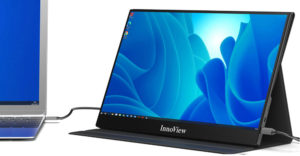Asia’s PDA markets have long been dominated by local players that have developed their own proprietary operating systems, with support for local languages serving as one of their strongest selling points. But Palm and Microsoft have targeted the Asian PDA market, and regional players are increasingly turning to Linux to fight against the global giants.
No one doubts that Linux upstarts face an uphill battle. For one, Palm and Pocket PC offer a wider range of software. Moreover, most Linux PDAs lack the ability to synchronize with Windows and Mac OS. Perhaps most importantly, the smaller players lack the marketing clout of their bigger rivals.
But proponents claim the Linux players can take advantage of Asia’s growing aversion to proprietary software and its restrictive licensing terms. They also argue that Linux is more flexible. In addition, a growing number of Asian PDA makers have concluded that hardware cannot sustain the industry and that profits must come from network services — which could level the playing field for Linux upstarts.
Sharp First with Linux
Japan’s Sharp was among the first Asian players to embrace Linux. The company’s Zaurus SL-5000 Linux Java PDA, which has been hailed for its strength as a platform for custom enterprise and third-party applications, has scored several impressive wins.
IBM recently selected the Zaurus as a mobile component for its Linux-based enterprise middleware solutions, and Japan’s premier carrier, NTT DoCoMo, will offer the device to subscribers to its 3G network.
The Zaurus runs on Qtopia, the Linux application platform developed by Trolltech. Earlier this year, IBM selected Qtopia’s software suite as its reference platform for Linux-based handhelds.
Trolltech, increasingly focused on the Asian market, believes Linux’s flexibility is a key selling point. “Our Asian customers realize that Linux Qtopia’s customizability is unrivaled in the market at present,” company spokesperson Tonje Sund told LinuxInsider.
“This is particularly important for the enterprise market, where the flexibility of being able to create tailor-made solutions for businesses is key.”
Linux in China and Korea
Korean PDA makers also have jumped on the Linux bandwagon. G.Mate Inc. recently launched a Linux PDA called Yopi, a clamshell unit with a 206-MHz StrongARM processor and 64 MB of RAM. Another Korean PDA vendor, PalmPalm Technology, launched a Linux-based CDMA IMT2000 phone-PDA combination. The company developed its Tynux-embedded Linux OS with Korean mobile operator SK Telecom.
Mizi Research, a Korean developer of embedded Linux systems, jointly produced a Linux-based PDA with electronics maker E-Sense Technology. Its Linux operating system, Linu@ — pronounced Linu-ette — is designed for various types of smart handhelds. It includes a Web browser, e-mail client, information-management software, and multimedia player.
If China is the Linux market of the future, as some analysts believe, Mizi is a company to watch. Last year it signed a contract with China’s leading Linux firm, Redflag Linux, to launch embedded Linux in the Chinese marketplace.
“There is an explosive growth of demand for e-books and PDAs in the Chinese IT market,” said Mizi president Seo Young-jin in a statement. “Based on [the] Chinese government’s support for Linux and its inherent flexibility, we are adjusting to [a] rapidly changing Chinese IT market.”
Challenging Nokia
Mizi also is negotiating with major PDA makers in China and Taiwan. But the company clearly has its eyes on the smartphone market. It recently announced a Linux-based smartphone operating system and application stack to take on Symbian and Microsoft.
The company is working with a major consumer electronics firm to bring the device to market. While Mizi is tight-lipped about its partner, some have speculated that it will be Samsung, the Korean giant that recently pushed Motorola to third place in the electronics market. Samsung is now regarded as the main challenger to market leader Nokia.
Asked how Mizi hopes to compete with Symbian and Microsoft, Michael Lee, vice president of international marketing at the company, pointed at the numbers. “Nokia, Samsung, and Motorola currently produce about 75 percent of the world’s mobile phones,” Lee told LinuxInsider. “Nokia only does Symbian. Samsung does all operating systems, including Linux. Motorola does Symbian, Microsoft, and Linux. NEC and Panasonic also joined the Linux camp. They all want the flexibility offered by Linux.”
Smaller Players
With Linux, Palm, and Pocket PC slugging it out, the smaller players with their own operating systems appear to be doomed. But Korea’s CellVic, which long had a 60 percent share of the Korean market, is not ready to throw in the towel. The company was quick to recognize that the days of the stand-alone PDA are numbered, and last year it launched the world’s first PDA for CDMA networks.
Another Korean vendor, Navius, used CellVic’s operating system to produce a GPS-enabled PDA, a portable substitute for car-based navigation systems. Meanwhile, Taiwan’s Penbex is another local PDA OS determined to survive. Developed by Taiwan’s Penbex Data Systems, Penbex is widely used in Asia’s Chinese-speaking markets. Penbex offers traditional and simplified Chinese versions of its OS, including a Chinese handwriting-recognition system. The company claims to have the support of nearly 5,000 application developers.
CMC Magnetics, the parent company of Penbex Systems, is a major PDA supplier to mainland China’s Hi-Tech Wealth, Beijing Founder Electronics, and Legend Computer. Hi-Tech Wealth, which sells PDAs under the Shangwutong label, is the biggest PDA brand in China. It shipped 800,000 units in 2002, putting it in the top five in the Asia-Pacific market, excluding Japan.
Taiwan Turns to Linux
With its large number of OEMs, Taiwan is the world’s leading PDA producer. According to Taiwan’s Market Intelligence Center, a government-funded IT research center, the country produced 3.15 million PDAs in 2002. Output is expected to reach 5.2 million units in 2003. The leader is Hi-Tech Computer, a unit of VIA Technologies, the world’s largest PDA OEM. Among its clients are Compaq, Toshiba, and Sharp.
But Taiwan’s vendors also are turning to Linux. MasterIA recently introduced Linux PDAs based on Intel’s 206-MHz StrongARM SA-1110 processor. The device offers multimedia functions with support for Chinese, Japanese, and Korean Web browsing; handwriting recognition; and on-screen virtual Chinese, Japanese, and Korean keyboards.
CMC is betting on several horses. It has global ambitions and plans to launch a Linux PDA for sale in the United States and Europe. Acer also is placing multiple bets. It was the first Asian company to secure a license for Palm OS and also produces Pocket PC- and Linux-based PDAs.
Despite the flood of PDAs currently hitting the market, analysts expect the growing popularity of smartphones will hurt PDA sales starting in 2004. Giles Richter, managing director of Tokyo-based Mobile Media Japan, argues that PDA makers wishing to play a role in the consumer market must get the form factor correct.
“As long as the form factor is phone size, then everybody will have it,” Richter told LinuxInsider. “If it gets to be like Maxwell Smart’s shoe and is also an organizer with an operating system and office tools, it is no longer a mass-market item.”














































